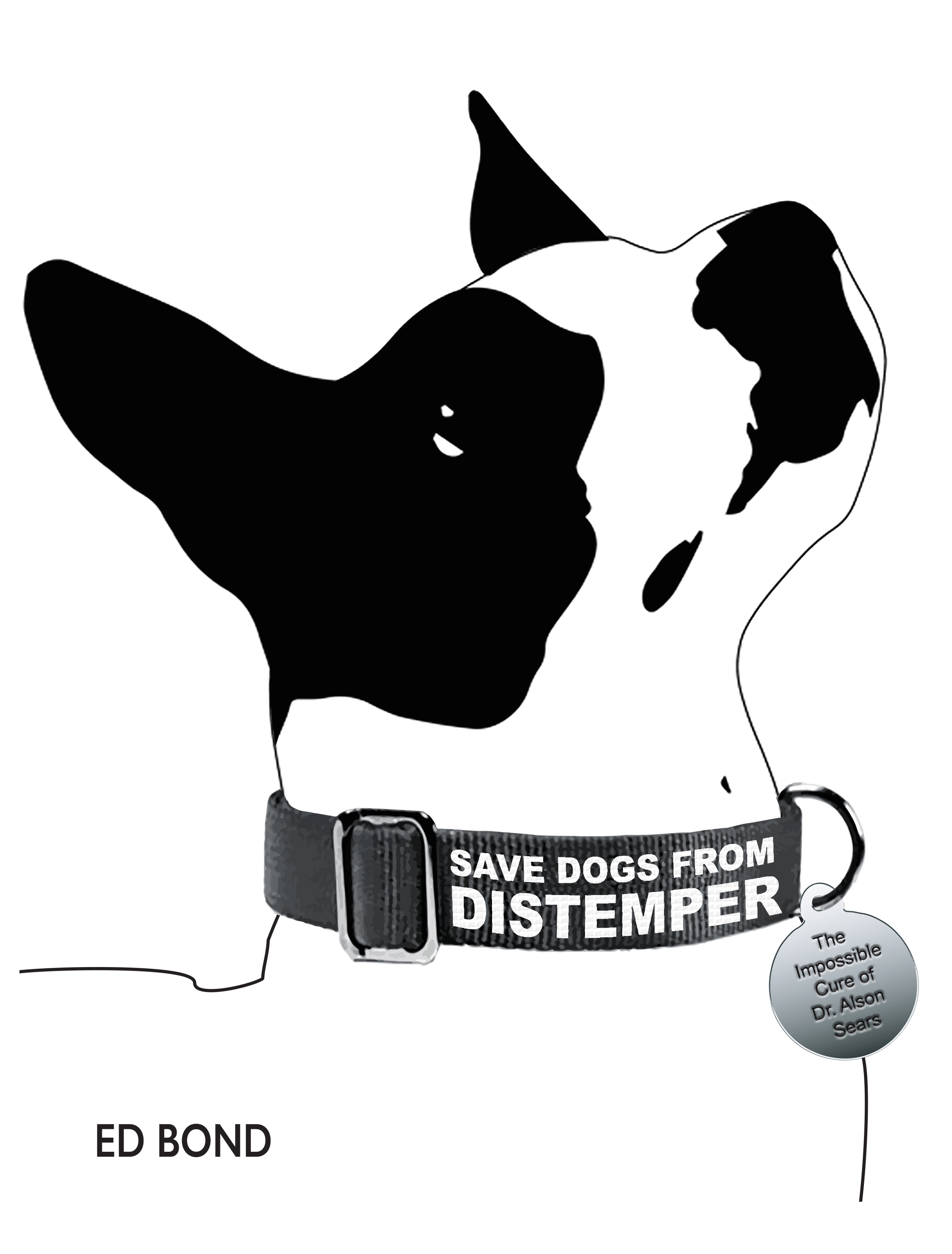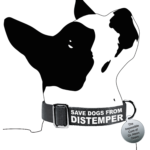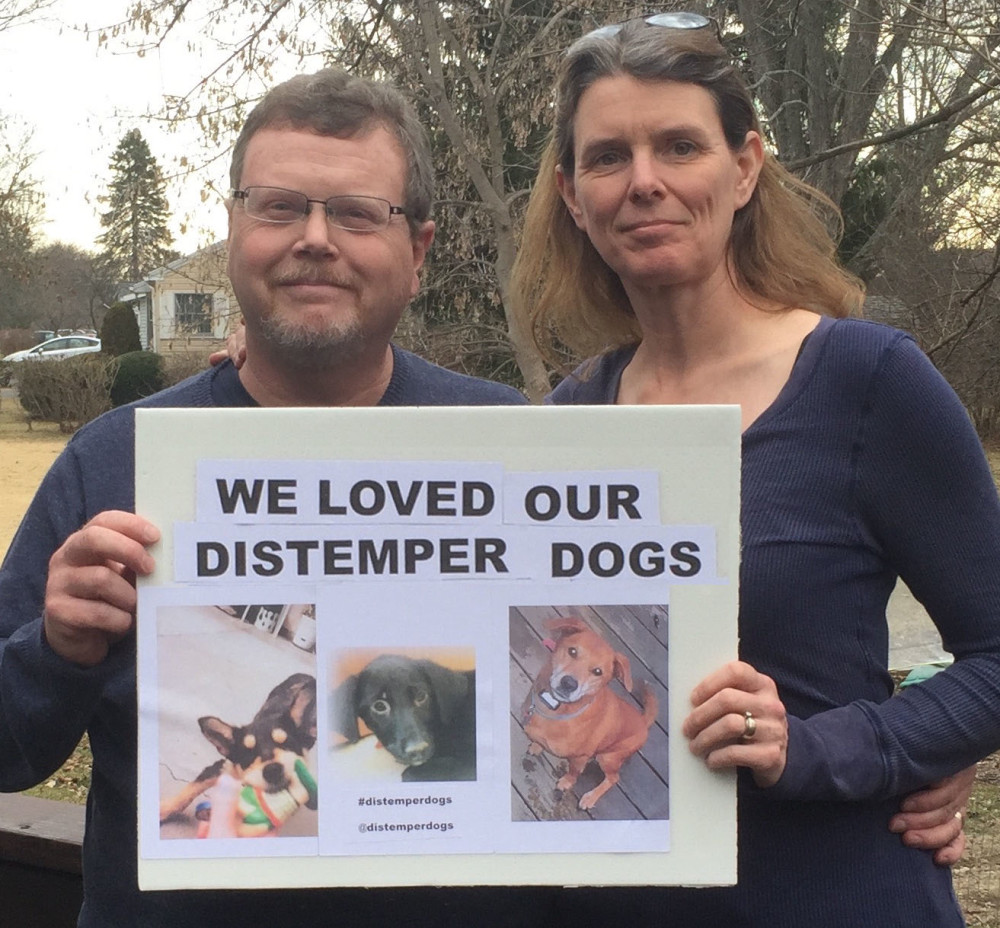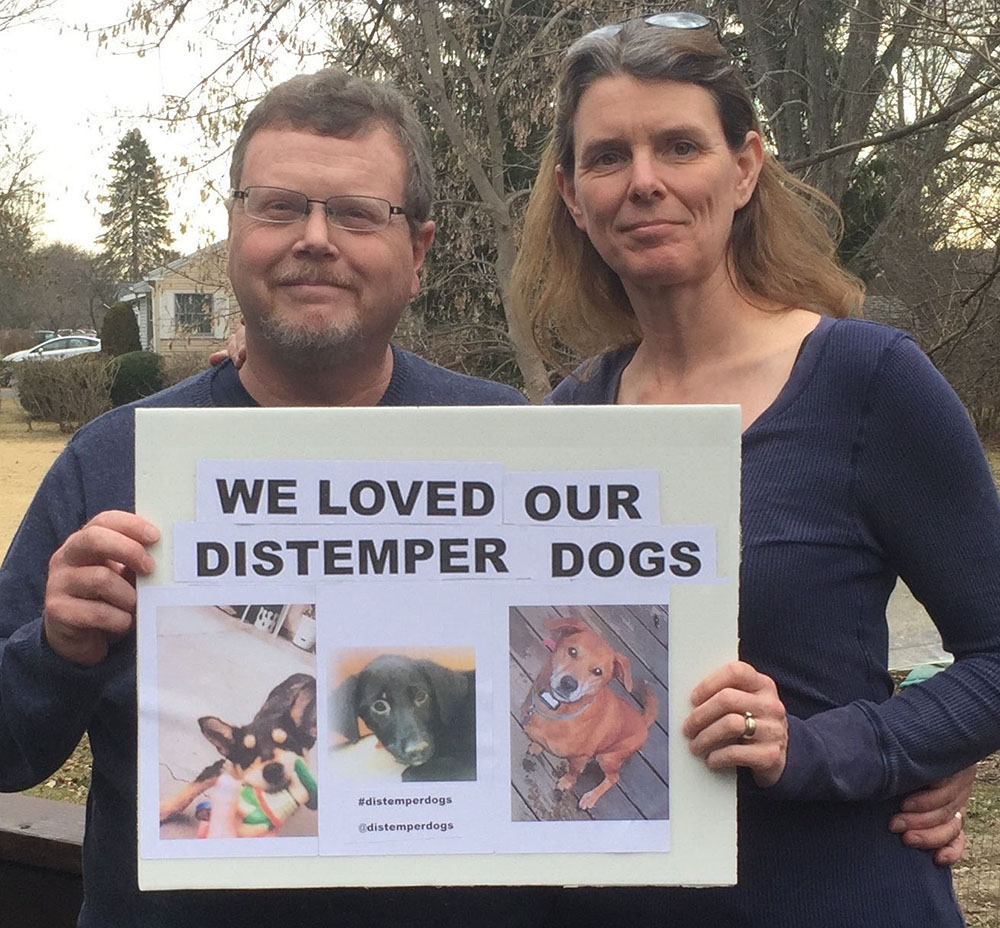In many cases of canine distemper, survival comes down to whether the dog has the will to live, and this comes through if the dog just keeps eating. If they keep eating, there is hope.
So here are some of the tips on getting a distemper dog to eat according to conversations salvaged from our discussion board:
[The board crashed for the last time earlier this month. You can still read the archive in the same URL here:
https://edbond.com/distemper/discussion/phpBB3/viewforum.php?f=2]
‘Getting a distemper dog to eat’
‘Please use this to post strategies that worked for you in getting your distemper dog to eat. One poster recommends raw liver. Here’s what someone else recommends:
“Cook up quartered potatoes and skinless chicken breast and boil it for 1.5 hours TOGETHER. Feed small meals every 2-3 hours of 70 percent potato / 30 percent chicken. Distemper animals are nauseous and until the serum takes hold, you have to give him water and food. I use Karo syrup from the baking aisle at the supermarket — the clear one — and put a little on his tongue or roof of his mouth every few hours. It works great to quell the sick stomach and then they can eat and drink. Fluids are very important for three days or so while the serum is working. If he drinks, no need for hospital. If he doesn’t and they can’t be syringed in, he will need to be in the hospital.”
What else has worked?’
Re: Getting a distemper dog to eat’, ‘
Reposting from Facebook: Jennifer Randolph Graddy
I purchased Boar’s Head turkey from the deli and it is all she would eat for two weeks. Then I started mixing in some Prescription Diet A/D with the turkey. Also used Karo syrup. When she was really sick I blended the turkey and A/D together and used a syringe.
Suzanna Urszuly
what worked on our puppy was chicken, chicken soup and puppy gold ( a very good supplement). She is doing amazing now! 🙂 —
‘Re: Getting a distemper dog to eat’,
‘Hi, I recently rescued two puppies who were just diagnosed wit distemper. I am a Biology major on the Pre-Veterinary track and work at an animal clinic. I have been so fortunate to have the support of my staff in caring for the puppies. There were a few days where they were not eating very well so I was forced to give them fluids. Other than that I have had great success in getting the dogs to eat! You have to try different things until you find the one thing that the animal likes. For Faith ( the female) puppy, I cook chicken in a chicken broth with vegies. I cut up the chicken and mix it in with rice and I pour some of the broth over the mixture. She loves it. Make sure not to season the chicken. I heat up her food before giving it to her. WHen the food is warm the smell is more potent. For Gray (male puppy) I give him Nutro Max lab meal kibble and I pour broth over the kibble. I make it like a soup. I warm up the broth before pouring it over the kibble. I hand feed both of them and at times it is a pain but it gets the job done. To give Faith her meds I make her a meatball of prescription diet r/d. She really loves it. Gray does not take his meds easily, but I recently tried giving him his pills in cottage cheese and he really loved it. However, the cottage cheese spoils quickly. Hope I helped
Jackie’
‘Re: Getting a distemper dog to eat’,
‘I just gave warm milk and warm water to my miniature pinscher, back when she got distemper, I almost had no hope but I was patient and she survived a couple of days after her suffering.
Is it recommended to give them milk if there are no other alternatives?’,
‘Re: Getting a distemper dog to eat’, ‘
Answer from Dr. Sears about milk: “Ed,There is NO food of any kind at this time known to help or control any virus disease much less Distemper. In fact at t his time NO oral medication that has been developed yet.”
‘Re: Getting a distemper dog to eat’,
‘Here ‘s some more advice from Vickie Novak:
“Folks are doing what they can out of the trying to save their babies so if you get any emails of folks doing syringe feeds ask them to stop especially if dogs has gone neuro the tongue does not work well with the jaw tremors. they are better to have vet show them sub q fluids and paste food in gums and let dog lick off on own. “‘
‘Re: Getting a distemper dog to eat’,
‘It is not bad to give the dog milk, but it just doesn ‘t do anything against the disease.’,
Re: Getting a distemper dog to eat’,
‘Patton,
1 and 3 months condition before,where he had this in two weeks time (didnt know he has already distemper) : hard to get on his feet,no balance, had weight loss, eye had discharge, hardened nose after i gave patton : 1.) lots of water with high dosage of sugar, (use syringe if he cannot drink on its own) every month 2.) canned tuna(vit a) mixed with rice together with its fish oil 3.) canned dog food w/liver 4.) human infants milk for 1-6 month 5.) meds prescribed by vets (vit c, antibiotics, etc. support meds) 6.) some short walking exercise every morning, since sunlight in the morning is the healthiest on his 3rd week: he was able to cope up with his condition, get his strength back today is his 4th week : we decide to undergo a spinal tap because hes nervous system is affected, i tried it and i hope hes gonna do better and gain his full strength back, and do activities like running and jumping’
‘Re: Getting a distemper dog to eat’, ‘I think all of the advice posted about getting a distemper dog to eat is good. I would just like to add that our dog Bella would eat baby food when she would eat nothing else. Our vet used it and she loved it. When she would go back to not eating I would syringe it and she tolerated it. When they are not eating or drinking it ‘s reallly important to see the vet often to let them check for dehydration. Exercise does stimulate their appetite and warming the food does help make it more appetizing too. other foods that haven ‘t been mentioned are cooked eggs and meat. Our vet gave us chewable vitamins to put in the food. They were easy to crumble.’
‘More tips on getting distemper dog to eat’
‘Sharing some of the best suggestions from our Facebook page on how to get a distemper dog to eat.
baby food – chicken, turkey tablespoon of corn syrup in 8 ounces of drinking water Darwin ‘s Raw diet
“soaking their food in warm chicken broth (homemade) and making a warm mash. Also adding baby food helped. ”
MaKenna Marie Arrigo •
“When Bella wouldn ‘t eat Dr. H. called a burger place he knew and
asked them to cook ground beef very rare. He said the aroma and warmth
of the food helps. He also got scrambled eggs and boiled rice. He had me
add water to the baby food and syringe feed her every 2-3 hours through
the night. He had me walk her several times a day to build strength,
get sunshine and fresh air and to make her hungry. I didn ‘t realize
that exercise would make her hungry but it did. “He also believes( as I
‘m sure we all agree) that being snuggled and loved by their human is
so important to recovery. In his clinic he wants the owners to be with
their dogs/cats the whole time- especially when waking up from a
procedure and during recovery. They need to have reason to get better. ”
Elizabeth Nelson
“Nutri-plus gel helps their appetite a lot. chicken+celery+carrots
boiled together, served warm. mixing wet food with warm water helps too.
”
Lim Wen Yih
“I also used puppy formula (GMC)!that is high in calories and worked well. ”
Carrie Reed
“We ‘ve had some luck adding wheat germ and fish oil to a mix
of high protein wet and raw puppy food. Alternating pedialyte and water.
”
Anna Burgess
NOTE: Do not force feed your dog because this can cause choking. At most, try pasting the food onto the teeth and gums and let the dog lick the food off from there.’




